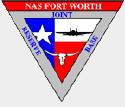Hobby Master HA4402 USAF Lockheed-Martin F-35A Lightning II Joint Strike Fighter - AF-01 [Low-Vis Scheme] (1:72 Scale)
"The F-35 program executive officer, has stated that the 'F-35 enjoys a significant Combat Loss Exchange Ratio advantage over the current and future air-to-air threats, to include Sukhois, which are currently being flown by the Russian, Indian, and Chinese Air Forces.'"
- Maj Gen Charles R. Davis, USAF, the F-35 program executive officer
 The Lockheed Martin F-35 Lightning II is a fifth-generation, single-seat, single-engine, stealth-capable military strike fighter, a multirole aircraft that can perform close air support, tactical bombing, and air superiority fighter missions. The F-35 has three different models; one is the conventional takeoff and landing variant, the second is short takeoff and vertical-landing variant, and the third is a carrier-based variant.
The Lockheed Martin F-35 Lightning II is a fifth-generation, single-seat, single-engine, stealth-capable military strike fighter, a multirole aircraft that can perform close air support, tactical bombing, and air superiority fighter missions. The F-35 has three different models; one is the conventional takeoff and landing variant, the second is short takeoff and vertical-landing variant, and the third is a carrier-based variant.
The F-35 is descended from the X-35, the product of the Joint Strike Fighter (JSF) program. Its development is being principally funded by the United States, with the United Kingdom, and other partner governments providing additional funding. It is being designed and built by an aerospace industry team led by Lockheed Martin with Northrop Grumman and BAE Systems as major partners. Demonstrator aircraft flew in 2000, with the first flight on December 15th, 2006.
The F-35A is the conventional take-off and landing (CTOL) variant intended for the USAF and other air forces. It is the smallest, lightest version and capable of 9 g, the highest of all variants.
Although the F-35A currently conducts aerial refueling via boom and receptacle method, the aircraft can be modified for probe-and-drogue refueling if needed by the customer. A drag chute pod can be installed on the F-35A, with the Royal Norwegian Air Force being the first operator to adopt it.
Pictured here is a 1:72 scale replica of a USAF Lockheed-Martin F-35A Lightning II Joint Strike Fighter that was operated by the 461st Flight Test Squadron, 412th Test Wing, during Spring 2013.
Sold Out!
Dimensions:
Wingspan: 5-3/4 inches
Length: 8-1/2 inches
Release Date: August 2014
 Historical Account: "Performance Anxiety" - Some public figures such as conservative politician Dennis Jensen in Australia, and American combat aircraft expert Pierre Sprey, have expressed concern over the aircraft's combat capabilities with specific regard to radar visibility, weight to power ratio, turn rate and inflammability. The concerns about the F-35's performance have resulted in part from reports of RAND simulations where numerous Russian Sukhoi fighters defeat a handful of F-35s. Dr. Jensen also suggested it is inferior to current and superseded aircraft already in service around the world. As a result of these issues the Australian defence minister, Joel Fitzgibbon, requested a formal briefing from the Department of Defence on the computer simulation. This briefing stated that the reports of the simulation were inaccurate, and that it did not compare the F-35's performance against that of other aircraft. Controversial Australian engineer Carlo Kopp has also claimed that new long-wavelength radars operated by the Russian armed forces can detect the F-35 at any angle. Additionally, Kopp claims that the F-35 is significantly stealthy only in a narrow cone around its nose, and is more like a conventional aircraft in a clean configuration from the side aspect, and only partially stealthy in certain radar wavelengths from the rear aspect.
Historical Account: "Performance Anxiety" - Some public figures such as conservative politician Dennis Jensen in Australia, and American combat aircraft expert Pierre Sprey, have expressed concern over the aircraft's combat capabilities with specific regard to radar visibility, weight to power ratio, turn rate and inflammability. The concerns about the F-35's performance have resulted in part from reports of RAND simulations where numerous Russian Sukhoi fighters defeat a handful of F-35s. Dr. Jensen also suggested it is inferior to current and superseded aircraft already in service around the world. As a result of these issues the Australian defence minister, Joel Fitzgibbon, requested a formal briefing from the Department of Defence on the computer simulation. This briefing stated that the reports of the simulation were inaccurate, and that it did not compare the F-35's performance against that of other aircraft. Controversial Australian engineer Carlo Kopp has also claimed that new long-wavelength radars operated by the Russian armed forces can detect the F-35 at any angle. Additionally, Kopp claims that the F-35 is significantly stealthy only in a narrow cone around its nose, and is more like a conventional aircraft in a clean configuration from the side aspect, and only partially stealthy in certain radar wavelengths from the rear aspect.
The criticism of the F-35 has been dismissed by the Pentagon and manufacturer. The USAF has conducted an analysis of the F-35's air-to-air performance against all 4th generation fighter aircraft currently available, and has found the F-35 to be at least four times more effective. Maj Gen Charles R. Davis, USAF, the F-35 program executive officer, has stated that the "F-35 enjoys a significant Combat Loss Exchange Ratio advantage over the current and future air-to-air threats, to include Sukhois", which are currently being flown by the Russian, Indian, and Chinese Air Forces.


